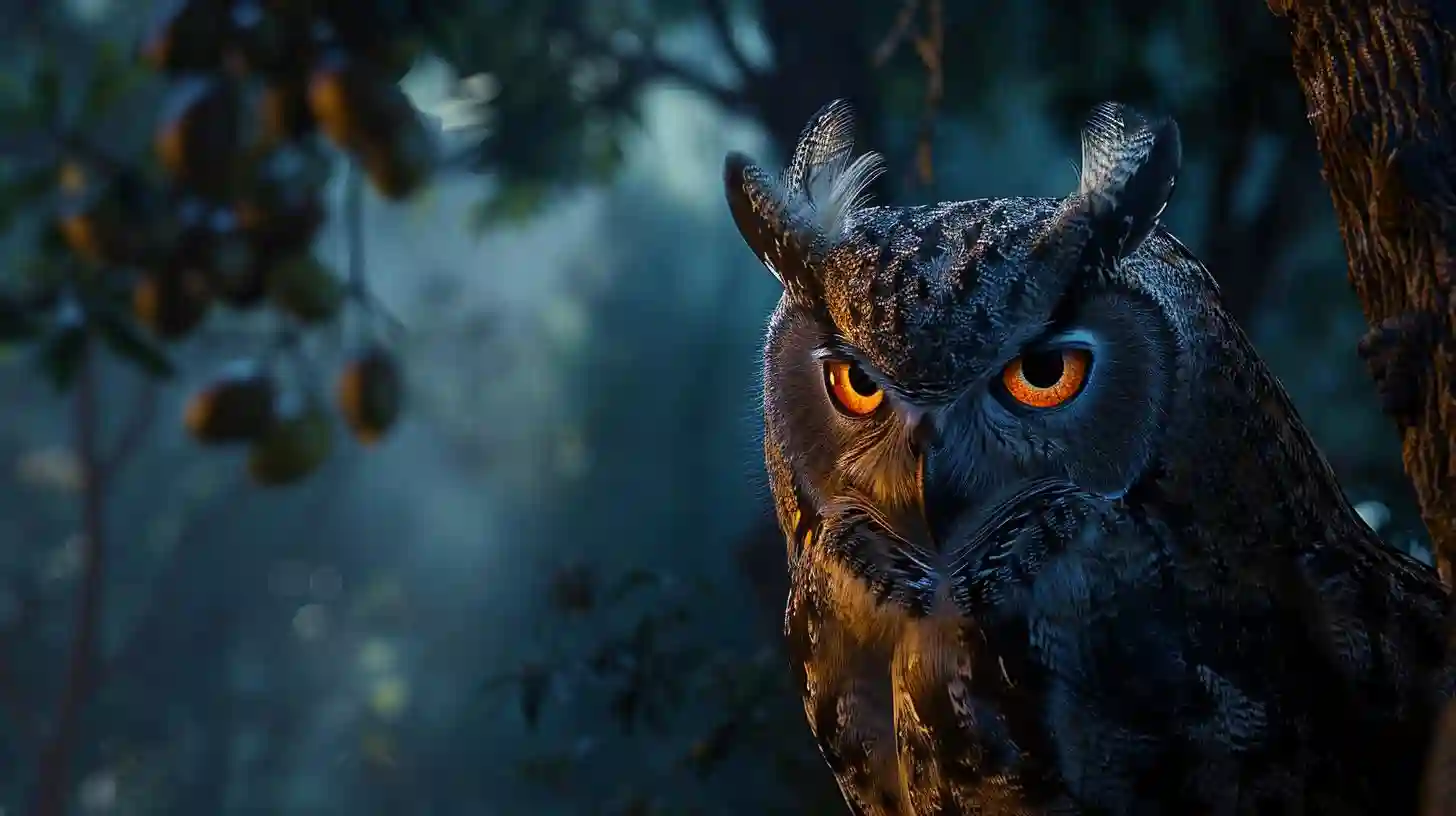
Owls, with their silent flight and seemingly eerie ability to swivel their heads to astonishing angles, have fascinated humans for centuries. The notion that an owl can rotate its head a full three hundred sixty degrees is a common misconception. However, while they cannot achieve a full circle, owls can nonetheless rotate their heads up to two hundred seventy degrees in either direction. This unparalleled capability is not merely a party trick or a spooky characteristic designed to intrigue; it is a sophisticated anatomical adaptation.
First, it is essential to understand why owls would need such a feature. Unlike humans, owls have eyes that are tubular and fixed in their sockets, meaning their eyeballs cannot move independently. If humans want to look around, they merely shift their eyes side to side or up and down. Owls, on the other hand, are forced to turn their entire heads to change their field of vision. This anatomical peculiarity can be attributed to the owl's extraordinary hunting techniques. Owls are predominantly nocturnal hunters and possess an exceptional nocturnal vision. Yet, their prey, such as small mammals and insects, move about unpredictably. In the dark forests or wide-open fields where they hunt, the ability to quickly and almost silently lock eyes with prey without moving the entire body increases their chances of successful hunting.
The miraculous ability of the owl’s head rotation is facilitated by a combination of skeletal and vascular adaptations. Key to this is their neck vertebrae. Humans and most mammals have merely seven cervical vertebrae, which limits neck rotation. Owls, on the other hand, have fourteen cervical vertebrae. This increased number provides a steadier and more flexible support structure, allowing for a greater range of motion in the neck.
Additionally, specialized tendons and muscles in the owl's neck cooperate to allow maximum rotational capability without straining blood vessels or causing any damage. Since the process involves a complex yet flawless choreography of bones, tendons, and muscles working together, the owl's neck displays an incredible degree of flexibility and sturdiness.
An often-overlooked aspect of the owl's head-turning marvel is the vascular system that supports blood flow to the brain and eyes. In humans, abrupt and extreme rotations of the neck would constrict arterial blood flow, potentially causing brain damage or stroke. Owls have evolved a set of arterial adaptations that protect them against these risks. One of the crucial adaptations is the bird’s unique way of routing neck blood vessels. Owls possess variable levels of the carotid and vertebral arteries that supply the brain with blood. Even when a particular route is pinched due to head rotation, other pathways still maintain adequate blood flow.
Moreover, owls have small bony holes or adaptations known as “reservoirs” in the vertebral arteries. These reservoirs enable the arteries to expand and pool blood, giving the birds an ample supply of oxygen even when extreme head rotations temporarily restrict blood flow. Such evolutionary traits ensure that an owl’s brain and ocular structures receive continuous blood supply, thus safeguarding them from potential damage during their extensive head rotations.
Apart from physical dexterity, the owl’s feathers play a psychological trick that adds to the illusion of the three-hundred-sixty-degree head turn. The feathers of an owl, particularly around the face and neck region, create a rounded, almost helmet-like appearance. When an owl rotates its head, the continual smooth surface can deceive the observer's eye into thinking the head has rotated farther than it actually has. Its face, framed by a dense layer of feathers, acts much like the hands of a clock, piecing together continuous imagery as it moves.
The evolutionary payoffs of this head-rotating ability extend beyond hunting efficiency. Owls are also prey to larger birds and other predators. Maintaining full situational awareness without constantly moving the body is crucial for avoiding detection and anticipating threats. This capability makes them much harder to surprise, giving these nocturnal birds a unique advantage in their natural habitats.
Furthermore, the owl’s remarkable head-turning ability offers advantages in its day-to-day life beyond hunting or evasion. Social interactions, mate selection, and territorial defense are areas where such an adaptation proves beneficial. Owls often communicate through a variety of calls and displays that require visual confirmation. A wider range of head motion allows them to assess these signals without the need to shift their entire position, thereby preserving energy and ensuring their messages are accurately received and interpreted.
While the owl’s head rotation draws awe and creates numerous myths in human cultural and mythological narratives, its real marvel lies in the blend of skeletal ingenuity, muscular structure, and vascular adaptiveness. The blend of these attributes makes the owl a subject of continued fascination for ornithologists and naturalists alike who study these birds to decode the evolutionary mysteries of nature.
An owl’s ability to turn its head in fascinatingly wide arcs is a masterful evolutionary adaptation born out of necessity and perfected through time. It showcases how a species can evolve unique structural traits to overcome intrinsic limitations and adapt to their environment, whether for hunting, self-defense, or simple day-to-day functionality. The blend of biological engineering and natural selection makes the owl’s head rotation a majestic testament to the marvels of evolution, embodying both function and form in a single, captivating package. Whether viewed from the perspective of anatomical science or evolutionary biology, the owl’s head-turning ability is a natural wonder that continues to puzzle, fascinate, and inspire.